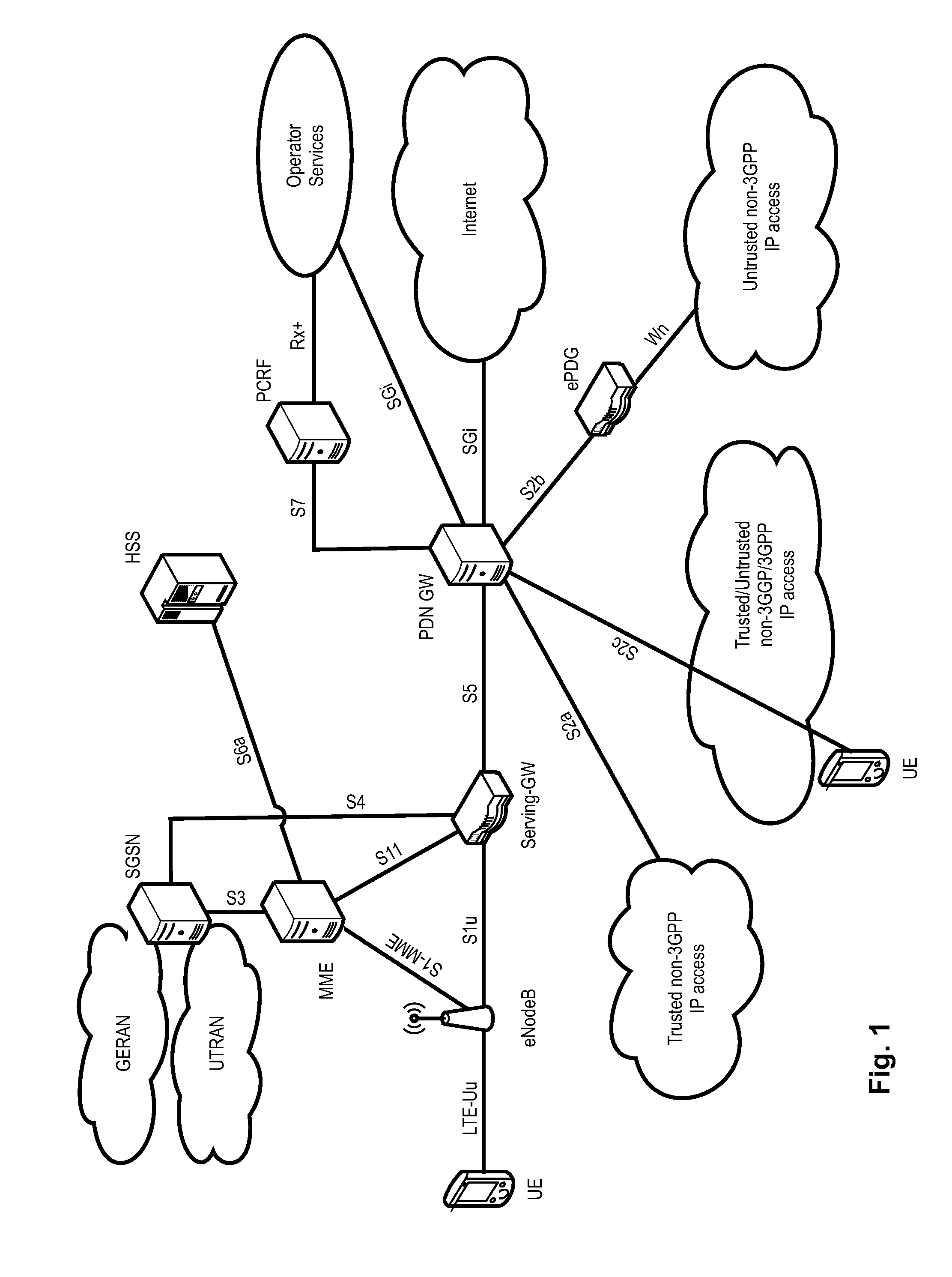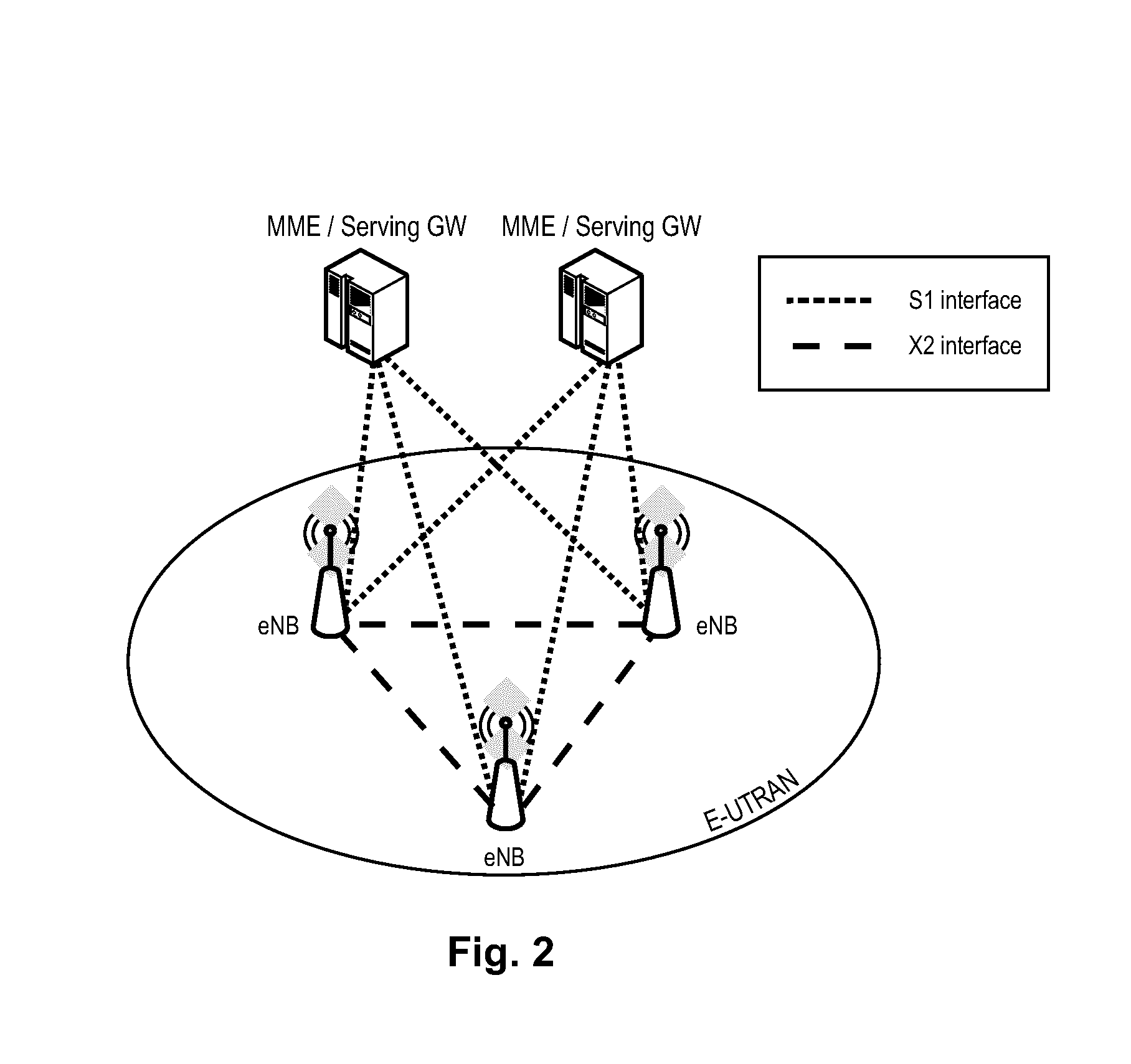Efficient status reporting for ues in dual connectivity during mobility
a technology of dual connectivity and status reporting, applied in the direction of wireless communication, transmission path sub-channel allocation, wireless commuication services, etc., can solve the problems of not being able to configure a mobile terminal with more uplink component carriers, not being able to find a spectrum band which is wide enough for the lte-advanced system, and requiring even lower delays. , to achieve the effect of avoiding unnecessary data packet forwarding
- Summary
- Abstract
- Description
- Claims
- Application Information
AI Technical Summary
Benefits of technology
Problems solved by technology
Method used
Image
Examples
first embodiment
[0250]In connection with the first embodiment of the invention, various implementations will be explained. To simplify the illustration of the principles of the first embodiment, several assumptions are made; however, it should be noted that these assumptions should not be interpreted as limiting the scope of the present application, as broadly defined by the claims.
[0251]The first embodiment of the invention will be described with reference to FIGS. 25 to 31. A dual connectivity scenario in a small cell environment is assumed, where the UE is connected to both the MeNB and the SeNB, and at least receives data that is forwarded from the SGW to the MeNB, and finally via the SeNB to the UE; i.e. as illustrated exemplary in FIGS. 21b and 21c in connection with EPS bearer #2. As indicated, the EPS bearer #2 (including the radio bearer #2 between the UE and the MeNB) can either be split in the MeNB such that the radio bearer can be transmitted via both eNBs as needed (see FIG. 21c) or is...
second embodiment
[0270]According to a second embodiment of the invention, the problem of the backhaul delay incurred by PDCP status reports can also be solved differently as will be explained in the following.
[0271]As described above, the delay problem for PDCP status reporting at mobility event (such as SeNB change from source SeNB to target SeNB) stems from the fact that PDCP status reports are, according to current LTE specifications, transmitted via the radio bearer the PDCP status information pertains to. For the case of SeNB, it means that a PDCP status report will be, after SeNB change has taken place, sent to the target SeNB which then in turn forwards the received PDCP status report to the MeNB (since PDCP layer is residing in MeNB).
[0272]In order to reduce the delay for PDCP status reporting at mobility events such as SeNB change, radio bearers which are configured between SeNB and UE and hence are reconfigured during SeNB change are, according to some exemplary implementation of this embo...
third embodiment
[0273]According to a third embodiment of the invention, PDCP status reporting for the user plane architectures where EPS bearers are split between MeNB and SeNB like shown in FIG. 22h, 22i is described. Since packets of EPS bearer #2 (in FIG. 22h, 22i) can be transmitted directly via MeNB and also via SeNB, the UE behavior for control information reporting in the uplink like PDCP status reporting shall be according to this embodiment, that control information shall be reported directly to the MeNB. According to some exemplary implementation of this embodiment logical channel prioritization procedure in MAC shall schedule the transmission of a PDCP status report directly to the MeNB. This achieves that PDCP control information is received at MeNB without the backhaul delay introduced by the detour via the SeNB. Similarly to PDCP status information, also other radio bearer specific control information like RLC status report shall be transmitted, i.e. this is taken care of by LCP proce...
PUM
 Login to View More
Login to View More Abstract
Description
Claims
Application Information
 Login to View More
Login to View More - R&D
- Intellectual Property
- Life Sciences
- Materials
- Tech Scout
- Unparalleled Data Quality
- Higher Quality Content
- 60% Fewer Hallucinations
Browse by: Latest US Patents, China's latest patents, Technical Efficacy Thesaurus, Application Domain, Technology Topic, Popular Technical Reports.
© 2025 PatSnap. All rights reserved.Legal|Privacy policy|Modern Slavery Act Transparency Statement|Sitemap|About US| Contact US: help@patsnap.com



